Started 15 years ago, Bingley Sim’s RuMa Collection has a strong focus on emerging local painters and sculptors in Malaysia. Besides collecting, he is a passionate supporter for local and regional art initiatives, such as being one of the founding members of the Malaysian Art Friends group, and one of the three Malaysian ambassadors for Art Jakarta since 2019. He has curated some art exhibitions and is a frequent speaker on art collecting.
LARRY’S LIST has the pleasure to speak with this Malaysian collector. Bingley Sim shared about his ‘love story’ with a black painting; how he collected also the moments spent with artists on his treasured collection of Moleskine sketchbooks; and how his new passion for charcoal drawings is a culmination of his art-collecting journey. He also told us more about the Malaysian art scene, as well as why the camaraderie built amongst regional collectors is both important and fun.
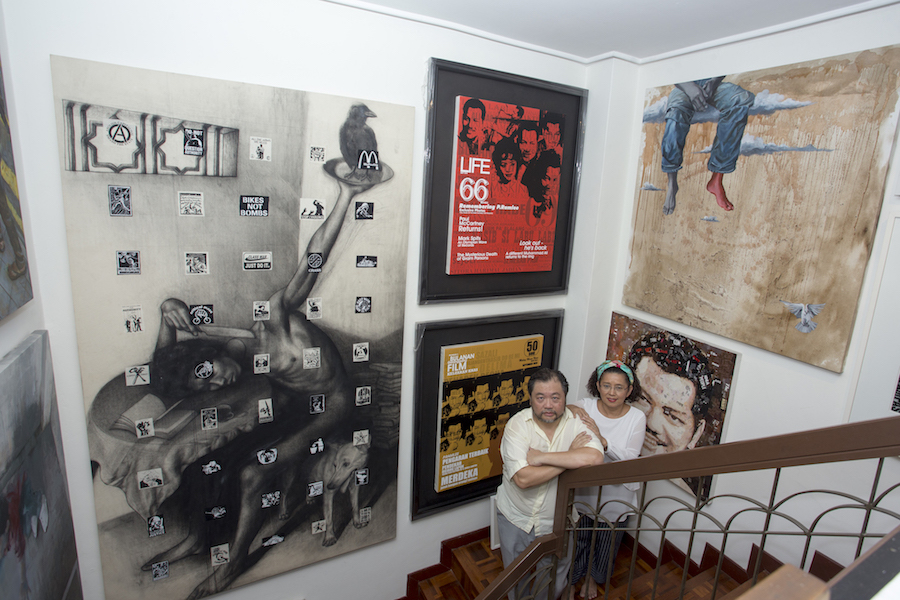
Collecting
What made you want to start collecting art? What is the main motivation behind your collecting?
I remember booking my first painting, a lovely abstract work by Chong Choon Woon, entitled Modern Shanghai (2005), an oil on canvas (112 x 183 cm) on 4 April 2005 at Town House Gallery. Little did I know that this was to be the beginning of my journey into the world of art collecting. As an investment banker, I had started buying paintings as an investment— I viewed collecting art as a different asset to diversify one’s fortune. However, all this changed in 2008.
You fell in love with a black painting. Can you tell us the story?
It was March 2008, 8 March to be exact. The West Malaysian states of Selangor, Penang, Kedah and Kelantan fell to the opposition parties when the final result of the Malaysia’s General Election was announced. Some people called it a political tsunami. I remember the week after the general election. The Kuala Lumpur Composite Index crashed; foreign investors started pulling money out of Bursa Malaysia— was this the start of the end for the Malaysian corporate market?
I remember dropping to HOM gallery at Taman Cempaka on Good Friday 21 March 2008 to collect an artwork I bought from the show “Young and New Part 1”. Bayu the promoter of HOM was there; he led me to his studio— building next to HOM but with a “secret” passage door from the first floor of HOM Gallery to show me a work he had just completed for a forthcoming exhibition, “ (Hitam Manis) Pandang Tak Jemu” opening at Art Case Galleries the next day.
Sitting grandly in the middle of the studio was the painting “Kau Sekutu atau Seteru”. I was mesmerisized— the events of the past two weeks (following the political tsunami) were summed up in this painting. Raja Azhar who organised the exhibition explained Bayu’s “Kau Sekutu Atau Seteru” in the following terms, “The title means ‘Either you are with me or against me’. You can see a mask, a fighter pilot, and a cross that’s the election. The fighter is represented by words— “disappointment”, “cruel”, “anger”— written in Malay around him. And in the black, you can see just one dot of red. Why is it there? It’s light, coming in.”
After much reflection, it suddenly dawned on me that “Kau Setuju atau Seturu” was the kind of painting I wanted for my art collection. I wanted a painting that was philosophical, a painting that had soul, a painting that could speak to me, a painting which could give me pleasure just looking at it. More importantly, “Kau Setuju atau Seteru” depicted a historical moment which had a very significant impact on me and all Malaysians for years to come.
From that point onwards, I became an “art collector”.

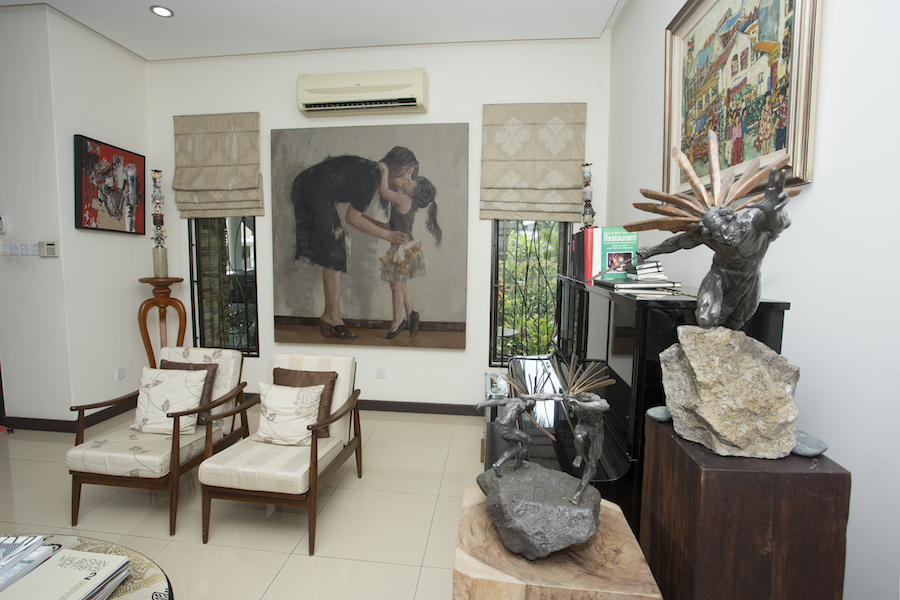
What is your focus regarding the artists in your collection? Are you more interested in emerging or renowned artists, local or international?
Although RuMa collection consist of many established artists, my primary interest has always been to search for local emerging contemporary artists. It is the thrill and satisfaction to see the career growth and development of these emerging artists. Over the years, most of these emerging artists I collected are now established.
However, I do collect a number of established mid-career artists’ works also; these are artists I have been collecting, and as long as they produce quality and cutting-edge works, I do need to buy their works to ensure a more complete collection.
Why is it important for you to collect and support local Malaysian artists?
I would like to put the question in context first. My passion is collecting contemporary artworks by emerging artists. In order to do that, not only do I need to know the artist well, but also to keep track closely of the artist development in terms of career, ideas, attitude to life, and most importantly, the artist’s determination (and abilities) to reach each of the milestones. I would spend many hours with the artists. As such, for logistical reasons, I collect local Malaysian artists. If I were to spend 10 years of my life in Indonesia, I can imagine I would have collected in depth many emerging Indonesian artists.
It is important to support emerging artists wherever possible. Most emerging artists need a commercial breakthrough, and in most circumstances, it is the collectors who could give that breakthrough for the emerging artists.
Since my primary focus is collecting local emerging artists’ artworks, there is a responsibility for me to guide and support these artists. Their success would give confidence to the new generation of artists, and this is important for the sustainability of the robust and growing art scene in Malaysia.
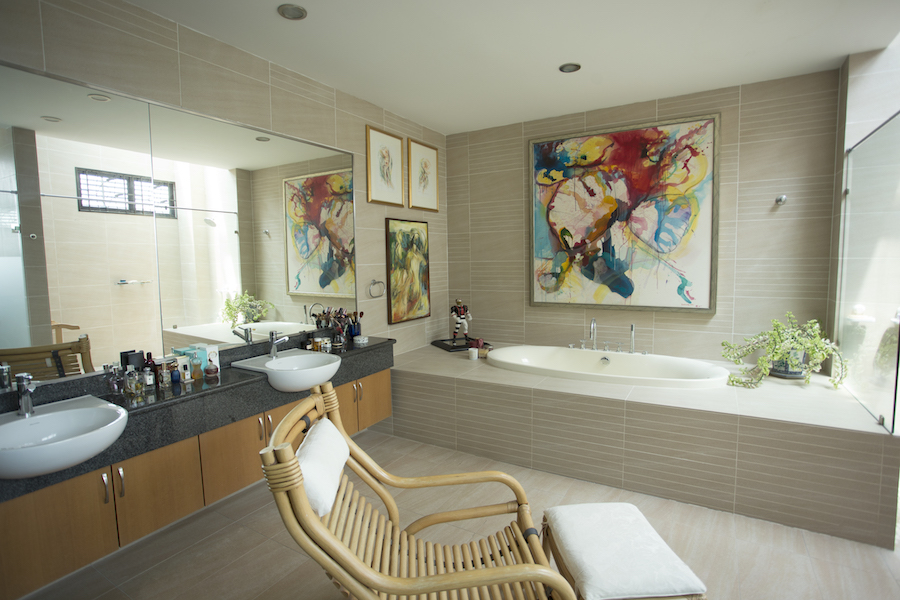
Is there any particular type of art that has consistently attracted you, or anything that unites all the works you have acquired?
I collect contemporary local art. There is a certain theme which runs through my collection. Per mentioned before, “painting that had soul, a painting that could speak to me, a painting which could give me pleasure just looking at it.” (“Desired Themes”). Having the Desired Themes are the basic prerequisite, but as I delve deeper into collecting, I find that I really enjoy collecting provocative artworks. Some people call these as works that go against the norm, unusual, maybe quirky, but they are certainly cutting-edge works which “wow” and would turn heads.
In my collection, there is a Paiman’s artwork which has a small coffin as part of the installation, or the Buden’s own made film projector which uses life maggots so that their silhouette is shot onto the screen.
I collect emerging artists’ works and do keep very close to the ground on exhibitions and galleries promoting these emerging artists. I also visit as many graduate shows as possible. There are many emerging artists which I am tracking and observing closely— it is a process and a lifelong journey.
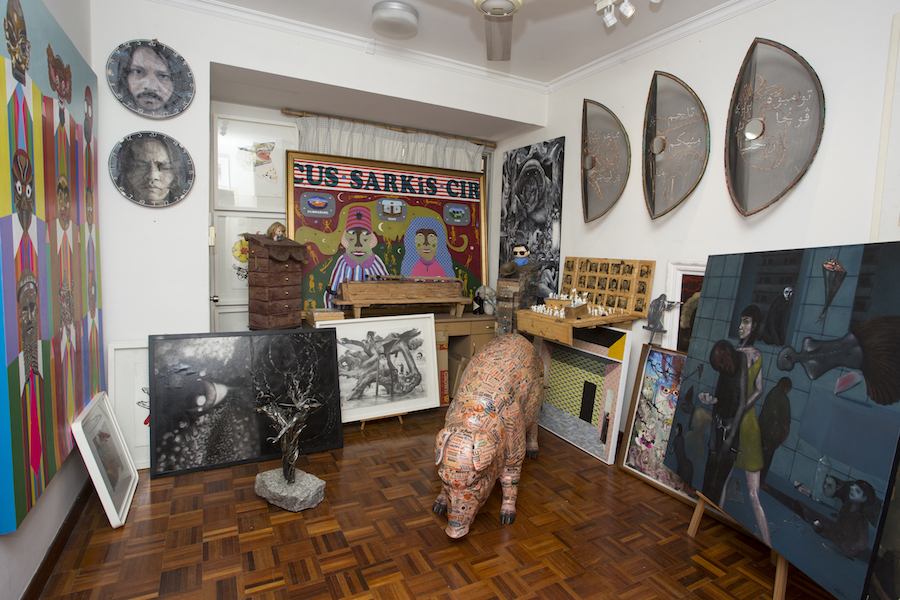
What were the first and the latest artworks you collected?
The first work is described in the first question. Today, it is hung in the library of my home.
The last artwork was by Samsudin Wahab (aka Buden) from his recent solo show “Rindu Bayangan” at Rissim Contemporary Gallery, Kuala Lumpur (17 August to 20 September 2020), entitled “Harum Kemboja” ( Fragrant Frangipani Flower), an oil on canvas measuring 153 by 153 cm. Buden has been described as “Malaysia’s ‘enfant terrible’ in the arts” by the curator of the show, Syed Muhd Hafiz. I began collecting Buden since 2008, and as long as he continues producing better works, I shall continue buying his works.
How many artworks do you own? Where do you display your collection?
I really don’t know how many artworks I own.
I display them at home although I keep most of my artworks at my art space, which I call RuMa—Ruang Ima (ruang is the Malay word for space, Ima is my wife, and rumah in Malay means house). That is also why I name our collection “RuMa Collection”. RuMa is a 2.5-storey terraced house, which we lived in for more than 10 years until 2010. Artists and friends drop by RuMa to talk about life, art, and latest gossips.
Where have you presented your art collection publicly?
Many of my artworks had been borrowed for exhibitions by the National Art Gallery, Bank Negara Malaysia Museum and Art Gallery. A selection of my Mat Ali Mat Som Sculptures were exhibited at the Collectors Showcase at Art Expo 2019. I lent 50 pieces of Stephen Menon’s artworks to a restaurant in Kuala Lumpur (KL).
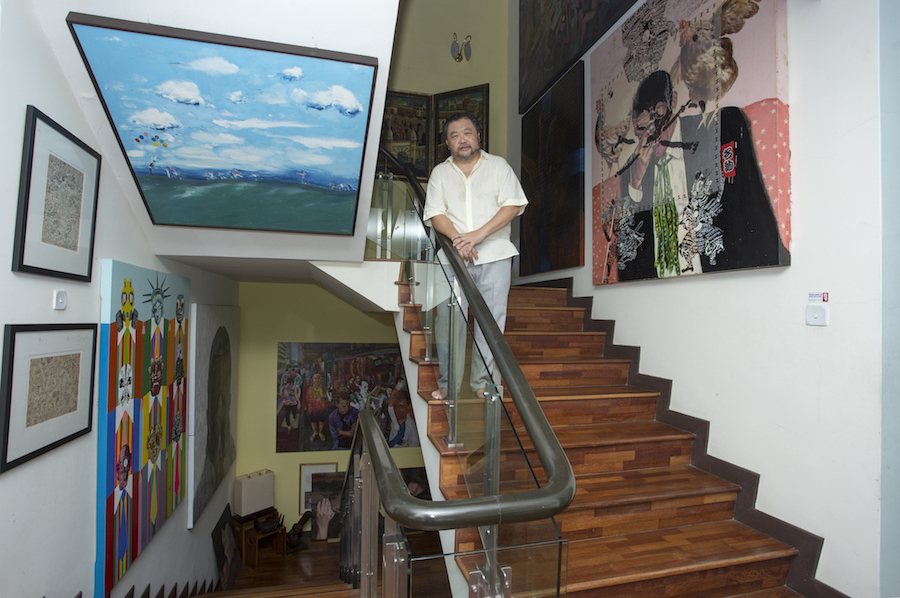
What is your most treasured artwork?
I have a collection of more than 20 (number growing by the year) Moleskine sketch books which “records” my art-collecting journey (“Moleskine Collection”). The first entry was made on 4 January 2009 by Hamir Soib— a beautiful biro artwork entitled “ The Super Clown 09”, and the last entry was a drawing of a Queen Termite by Haslin Ismail on 10 October 2020 after I visited his solo at HOM gallery.
Most of the artists whom I spend time with would do a quick sketch on my Moleskine when we meet for coffee, or at the artists’ studios or RuMa. There are some artists whom I have spent a lot more time with, for instance, Stephen Menon, and as such I do have a lot more of his drawings in my Moleskine Collection.
This is my most treasured artwork as it documents the one moment in time when I spend with the artists. I do look fondly at the drawings of emerging artists who have since become established. I hope to grow the collection to at least 50 sketchbooks.
You also learn drawing from the artists you meet. Why is it important for you to meet and interact with artists?
After spending hundreds of hours with artists over the past 15 years as well as sitting down with them whilst they do their drawings on my Moleskine sketchbooks, I must say I have learned quite a lot of drawing skills. During the Covid lockdown, I started charcoal drawing more seriously.
As mentioned earlier, my passion is collecting contemporary artworks by emerging artists. In order to do that, I not only need to know the artist well but also to keep track closely of the artist’s development in terms of career, ideas, attitude to life, and most importantly, the artist’s determination (and abilities) to reach each of the milestones.
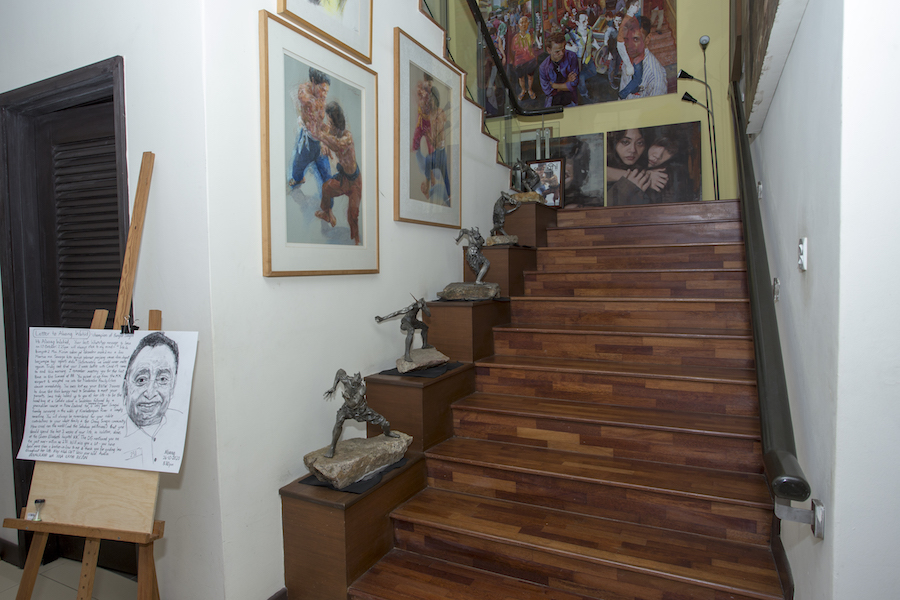
What was your happiest moment being involved in art?
I begun charcoal drawing in the middle of August this year, and with good guidance from many artist friends, I begun doing it very diligently. I find that practice makes perfect, and would try to draw everyday.
I had the benefit of getting very close to many artists since the start of my art-collecting journey 15 years ago. I had spent long hours sitting down with them discussing differed art matters as well as seeing many of them come up with spontaneous ideas and draw in front of me. As such my charcoal drawings are a culmination of these experiences.
I find it very therapeutic and relaxing every time I draw. I do get a “high” when I draw, and I worked hard to ensure what I draw is better than the last artwork. Most of the time, I would like to think I succeed— and each time that happens, that would be my happiest moment in art.
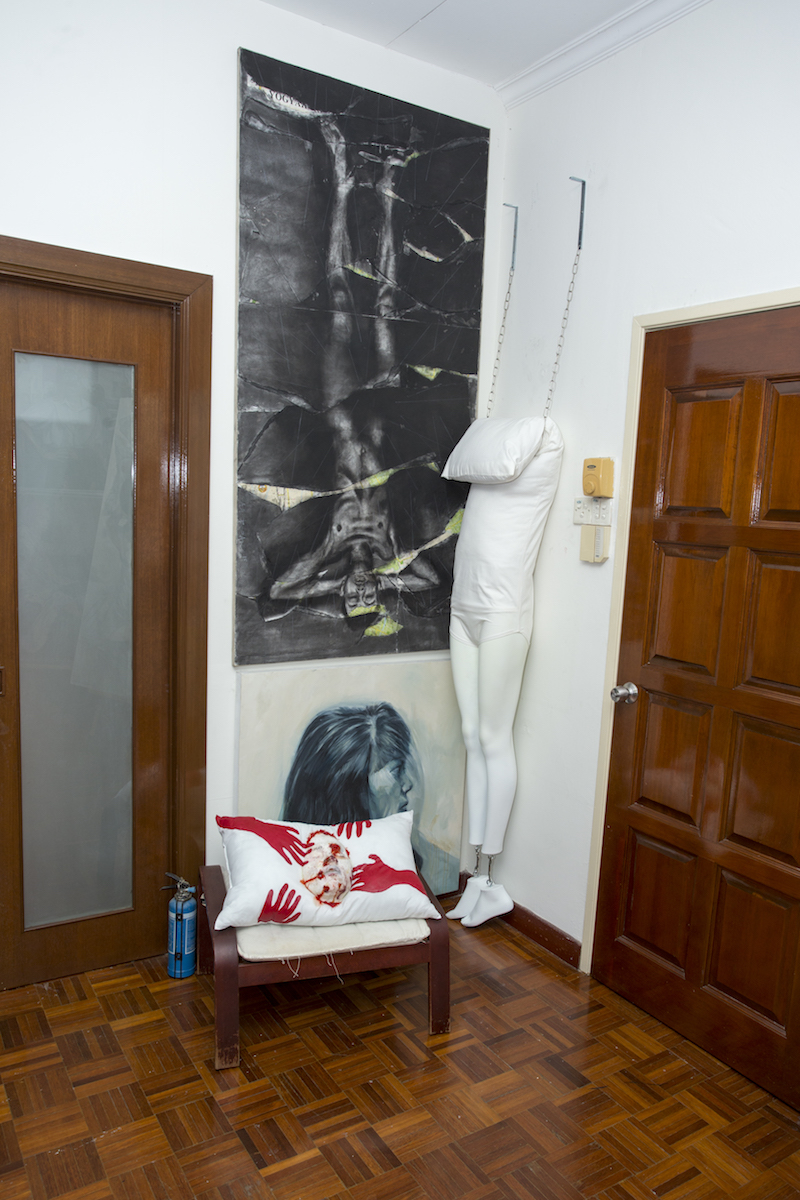
Malaysian and regional art scene
How do you describe the art scene in Malaysia right now?
I presume question is about the art scene pre-Covid lockdown (“MCO”). Anyway, before embarking into the pre-MCO situation, the last 6 months in Malaysia had been extremely challenging. There had been a complete slow down in the market and gallery sales had dropped tremendously. Many collectors have decided to hold back on their purchases because of the economic uncertainties. However, even in such uncertain times, very sought-after artists continue to do well. There were two solo shows which had been completely sold out, namely Samsudin Wahab (aka Buden)’s “Rindu Bayangan” at Rissim Contemporary Gallery, KL (17 August to 20 September 2020), and Najib Bamadhaj’s “Pride and Prejudice” at Taksu Gallery, KL (24 September to 17 October 2020).
The auction continues to do good businesses; for November 2020, there are three auctions, namely Henry Butcher Auction, Raffles Auction and Klas Art Auction.
What have also become more apparent are the online and virtual art exhibitions. They are becoming a norm. It makes complete sense for galleries to embrace online marketing as the reach would be much wider. As consumers are more accustomed to online exhibitions, more viewers would be able to “visit” the exhibitions—this would benefit artists who participate as their works would get more exposure.
Post the MCO, I would expect a more vibrant art scene in Malaysia. ArtExpo Malaysia is one of the most prestigious and longest-running international art fair in Southeast Asia. It had its 13th exhibition in October 2019, but unfortunately the 2020 edition was cancelled because of the MCO.
As compared to our neighbouring countries, I would say we have enviable standards, talents, and ideas. Malaysia is lucky as we are multiracial & multicultural; as such we do not run short of ideas. However, if we were to compare to Singapore, our infrastructure fall much behind— not enough money is spent on the local art industry, and the local institutions do not appear to support the industry enough. We must have tax incentives to encourage more money to go into the art industry.
Indonesia appear ahead in its art education. The Bandung art universities are a class of its own. With the many collectives in Jogjakarta, the vibrant art happenings in Jakarta, especially Art Jakarta, Malaysia sadly falls behind.
In the Philippines, the number of art collectors is far greater than in Malaysia, and the support these collectors have for the Filipino artists is something missing in Malaysia.
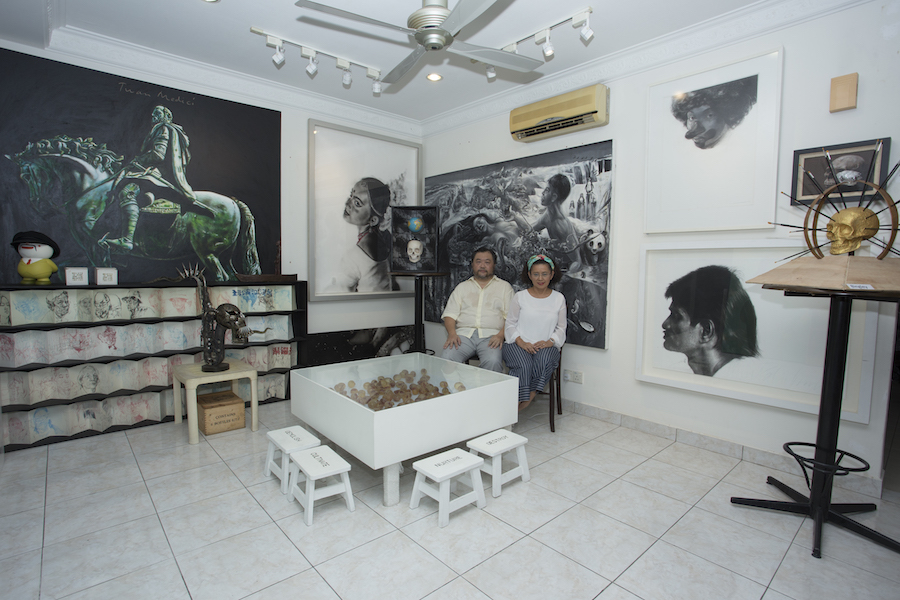
What are the ways to bring more Malaysian artists to the international audience? What is the role of art collectors in it?
We need a good infrastructure and a robust ecosystem. There have already been many initiatives; a most recent one is The Cultural Economy Development Agency (CENDANA). CENDANA is set up by the Malaysian government to build a vibrant, sustainable, and ambitious cultural economy for Malaysia—its mission: for Malaysia to be known for its art and artist and for KL to be recognised as a cultural and creative city.
Some of the initiatives by CENDANA included the KL Biennale as well as the Gallery Weekend Kuala Lumpur (“GWKL”).
GWKL 2020 has embraced the opportunity offered through the 2020 developments to create a structured and accessible digital presence that enables extended virtual participation in the Luminary Forums and other offerings of the GWKL programme to guests from all over the world.
Role of the collectors:-
(1) getting to know collectors from the region and explaining to these collectors up and coming, and emerging Malaysian artists;
(2) participate in publications like 30 ArtFriends publications whereby Malaysian artworks can be showcased;
(3) visit more regional art fairs and to encourage more local galleries to participate in these art fairs; and
(4) promote these artists in foreign publications.
Can you name three emerging Malaysian artists who should be on our radar?
If I have to pick three emerging Malaysian artists, I would select Arikwibowo Amril (“Arik”), Sabihis Mohd Pandi, and Ms Ain Rahman.
Both Arik and Sabihis were born in 1988 and both graduated with a BA of Fine Arts from Universiti Teknologi MARA (“UitM”). Ain, born in 1994, graduated from the same university with a Bachelor degree in 2017 (majoring in sculpture) and a Master degree in 2019 (majoring in installation and new media art).
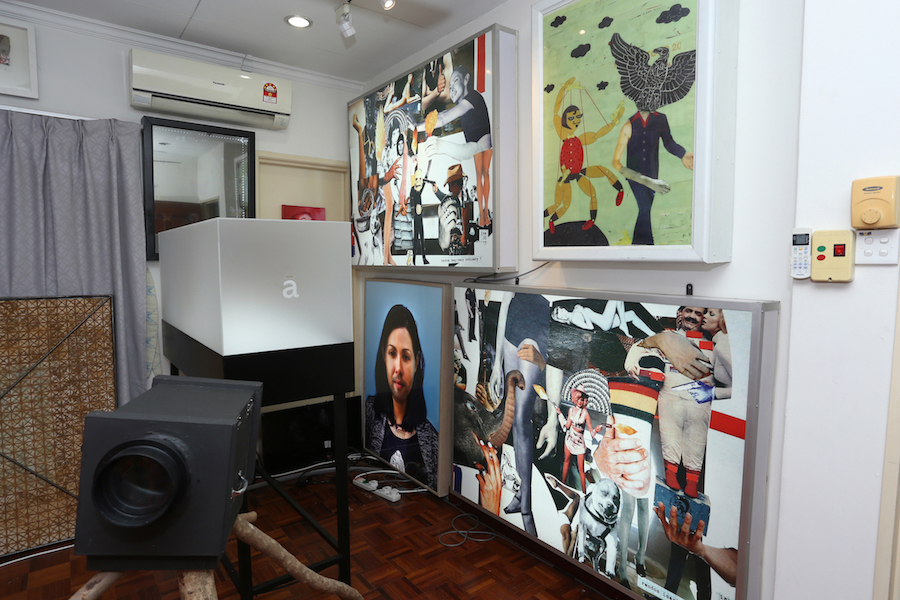
How are you involved in various art projects in the region?
In 2010, I was involved in the “30 ArtFriends” project whereby 15 collectors from Singapore and 15 from Malaysia got together to publish the 30 ArtFriends Book. Money raised from the sale of these books was donated to art-related activities. In 2004, we followed up with the “30 ArtFriends 2”, whereby 10 collectors from Singapore, Philippines, and Malaysia respectively got together to produce this second volume.
I am also involved in Art Jakarta under the stewardship of Tom Tandio, whereby I am one of the three Malaysian ambassadors since 2019. This in many ways created a strong bonding amongst the art collectors in the region, and we learn a lot from each other— the currently ongoing Art Jakarta virtual show 2020 is a lesson for us all in the region.
I was also invited by ArtStage in 2018 as one of the three Malaysian collectors for the Collectors’ showcase, but unfortunately ArtStage had to be shelved 2 weeks before the show.
In ArtExpo Malaysia I have talks, and in 2019, showcased a selection of my sculptures by Mat Ali Mat Som in a collectors’ showcase.
How important is regional collaborations in boosting art development?
Regional collaboration is especially crucial for the development of the art industry in the region. This would be a good avenue for local artists to be exposed to the regional market, and for a better appreciation of the differences and similarities in culture and taste.
The collaboration amongst the collectors added a new dimension to art collecting. We exchanged ideas on emerging artists; we share the different approaches in our collecting style; and most importantly, the camaraderie built amongst us make art collecting even more fun.
Instagram: @bingleysim
All photos by Danial bin Fuad.
This interview was facilitated by Art Jakarta (Art Jakarta Virtual, 19 October – 15 December 2020).
A selection of artists Bingley collects:
Arikwibowo Amril
Bayu Utomo Radjikin
Chang Yoong Chia
Mat Ali Mat Som
Stephen Menon
By Ricko Leung





